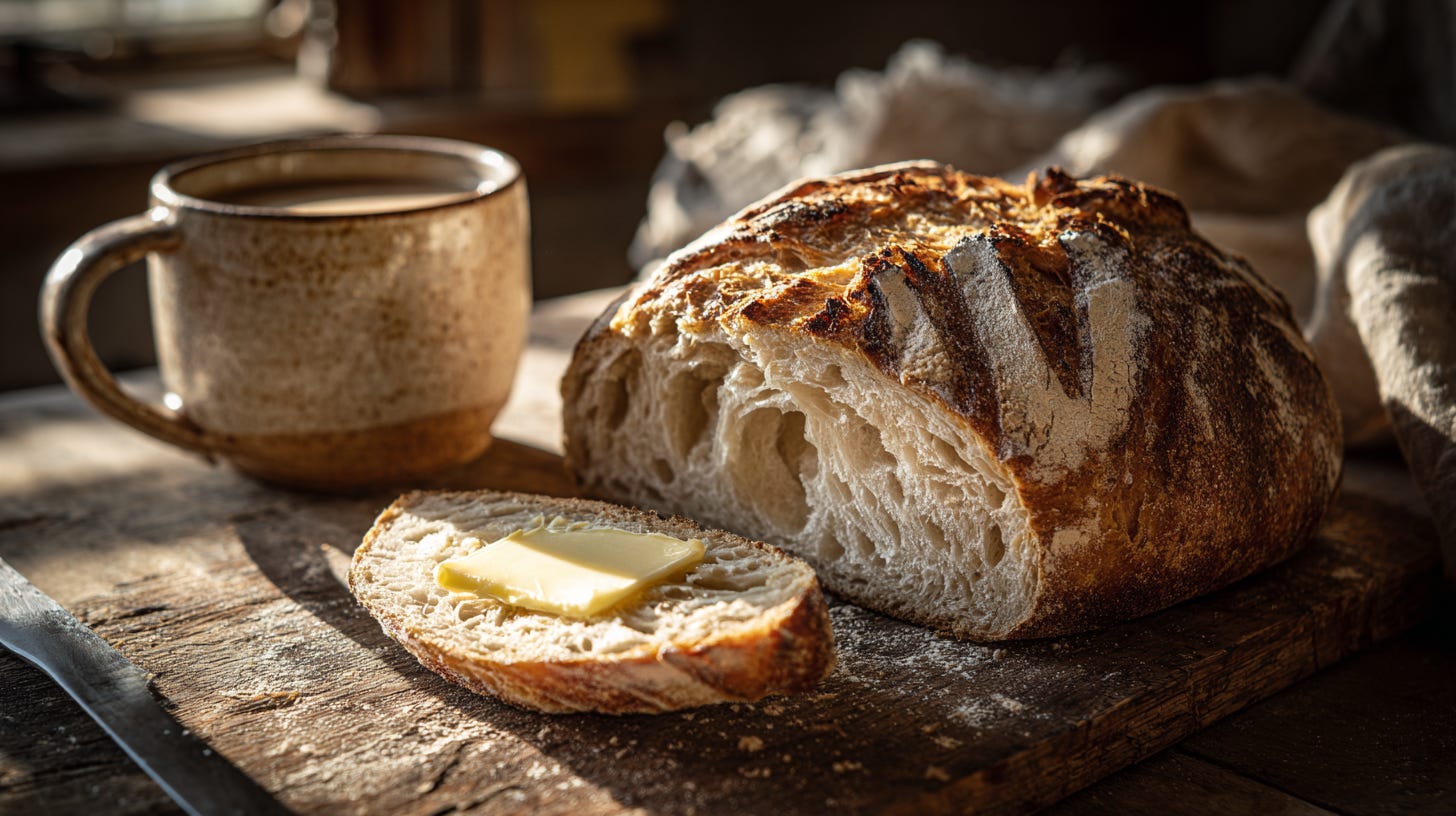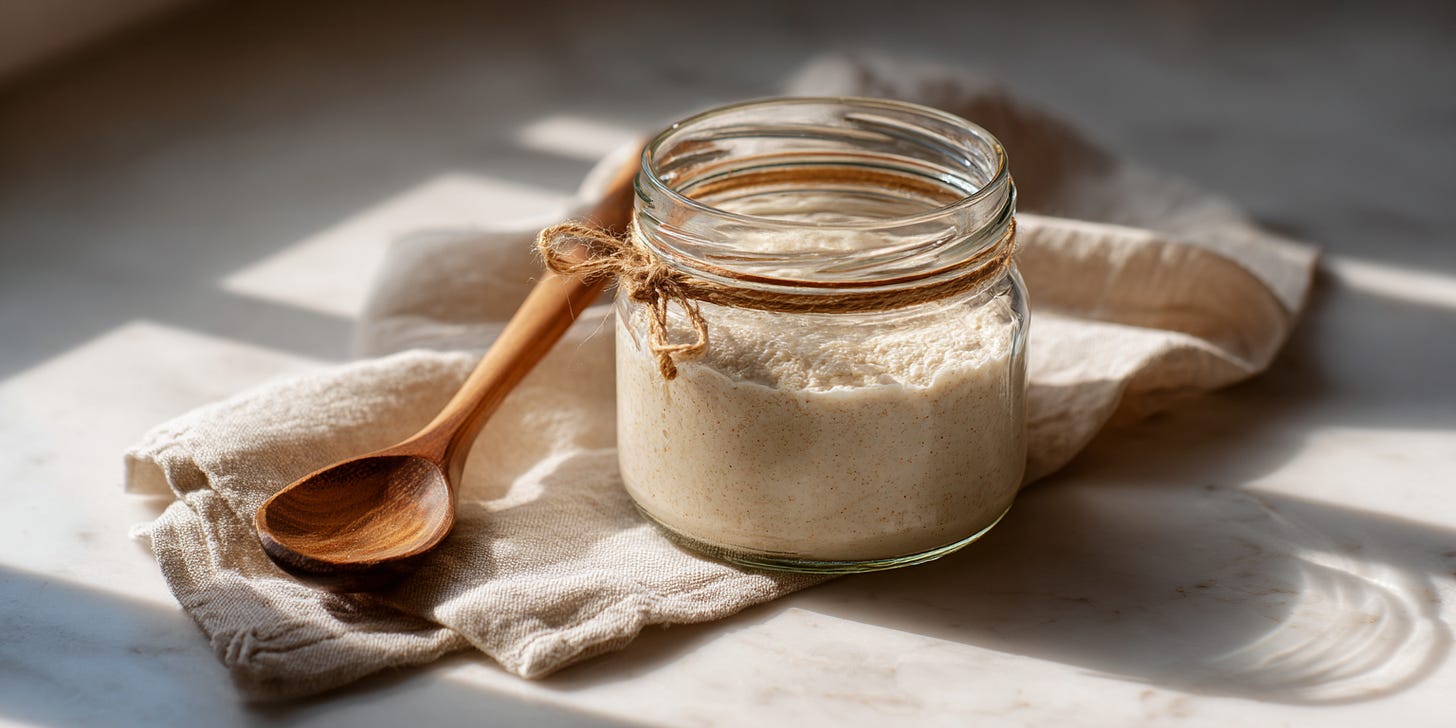Luxury in a Loaf: Canadian Sourdough Rituals
Discover the quiet indulgence of fresh sourdough, slow mornings, and the art of living well—Canadian style.
🥖 Luxury in a Loaf of Sourdough
There’s something indulgent about the sound of a crust cracking under the weight of a bread knife. Steam rises, the butter melts in slow motion, and suddenly… a simple moment feels like a ritual—a quiet luxury. A Canadian morning done right.
The Art of Sourdough, Canadian-Style
Sourdough isn’t just bread. It’s patience you can eat.
Across Canada, bakers are treating this humble loaf like a work of art. Whether it’s made from Saskatchewan red fife flour, speckled with wild Atlantic salt, or shaped using a starter born in BC’s ocean air, each loaf tells a story—a slow one.
It’s not mass-produced or rushed. It’s fermented, nurtured, and coaxed into life. That’s what gives it that subtle tang, that open crumb, that perfect chew. And in true Canadian fashion, every region adds its accent, like a dialect in dough.
Some mix in spruce tips, others roast garlic from Ontario fields. The grain might come from prairie winds, the water from glacier-fed streams. Luxury here doesn’t wear labels—it grows roots.
A Morning Ritual by the Lake
Picture this: Muskoka chairs still wet with morning dew. The lake’s surface was glassy and calm. Somewhere, a loon calls.
You tear into a crusty slice of fresh sourdough, still warm from the oven (or the cabin’s woodstove, if you’re lucky). Beside you, coffee steams in a hand-thrown mug. No phone. No schedule. Just the hush of pine trees and the quiet luxury of a slow Canadian morning.
Bread becomes something else in moments like this. It’s not just food—it’s a place. It’s memory. It’s a passport back to that dock, that laugh, that summer.
Because when life slows down, flavour shows up.
From Grain to Crumb: A Taste of Place
Good sourdough isn’t about perfection. It’s about terroir—the taste of place. And Canada, with its deep soils and clean air, bakes that into every loaf.
A starter grown in Cape Breton behaves differently from one in Vancouver Island. And that’s the magic. Each loaf is a little alive. A little wild. A little local.
So when we talk about luxury in Canada, we don’t always mean champagne or chalets. Sometimes, it’s just a loaf of bread. Crafted with care and shared with someone you love. Torn by hand and devoured in silence.
That’s luxury. And it smells like sourdough.
🥣 Make Your Own Canadian Sourdough Starter
Want to bring a taste of Canada into your kitchen? It starts with just two ingredients: flour and water. But what you’re doing is growing something alive—a colony of wild yeast and friendly bacteria that will eventually help your dough rise naturally.
It’s the foundation of every great sourdough loaf. And yes, it’s easier than it sounds.
Ingredients:
½ cup Canadian whole wheat or rye flour (Red Fife if you can find it)
¼ cup lukewarm water (preferably spring or filtered)
Day 1: Mix and Wait
Stir the flour and water together in a clean glass jar. The mixture should be thick but stirrable—like pancake batter. Scrape down the sides, loosely cover the jar with a cloth or lid (not airtight), and place it in a warm location (around 20–22°C / 68–72°F).
This is the beginning of your starter—a wild, living culture that will grow stronger each day.
Days 2–6: Feed and Watch It Come Alive
Each day, around the same time:
Discard about half of the starter (this makes room for new food and keeps the mix healthy—not a waste, just part of the process).
Add ½ cup fresh flour and ¼ cup lukewarm water.
Stir well and cover again.
After a few days, you’ll notice bubbles forming and a tangy, yeasty aroma—proof that your wild yeast and bacteria are thriving!
By Day 6 or 7... It's alive!
Your starter should now be bubbly, slightly domed, and smell pleasantly sour (like yogurt or ripe fruit). That means it’s ready to use in sourdough bread recipes—or you can keep feeding it daily and store it in the fridge between bakes.
Give it a name if you like. Many bakers do. It is a living thing, after all. 😄
🧡 A Little Slice of Canada
Your flour, your air, and your kitchen shape your starter. It’s a uniquely Canadian culture, growing right on your counter. When you finally bake that first loaf, you’ll taste not just bread, but the slow rhythm of place and time.






